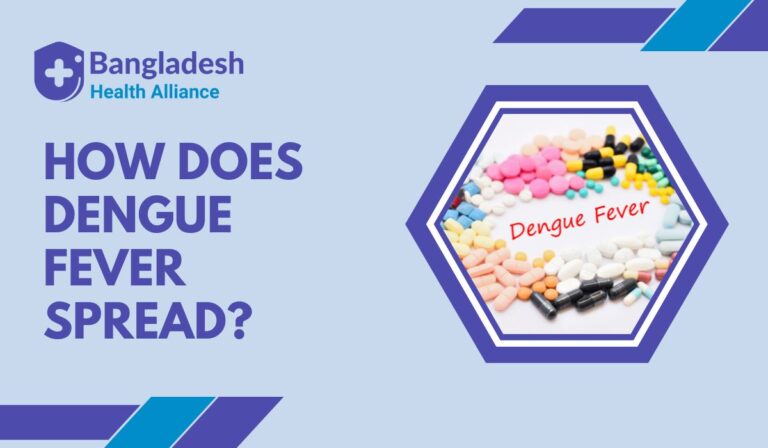Dengue fever, a viral illness transmitted primarily by mosquitoes, poses a significant health threat in many parts of the world, particularly in tropical and subtropical regions. Understanding how dengue fever spreads is essential for effectively preventing and controlling its transmission. In this article, we will delve into the intricacies of dengue virus transmission, shedding light on the factors that contribute to its propagation and offering insights into preventive measures.
The Culprit: Aedes Mosquitoes
The primary vector responsible for transmitting the dengue virus is the Aedes mosquito, with Aedes aegypti being the primary species involved. These mosquitoes have a voracious appetite for human blood and are particularly well-suited to urban and semi-urban environments, where they thrive amidst human activity.
Transmission Cycle
The transmission cycle of the dengue virus involves a complex interaction between the virus, the mosquito vector, and human hosts. Here’s a step-by-step breakdown of how dengue fever spreads:
- Virus Acquisition: The cycle begins when a female Aedes mosquito feeds on the blood of an infected individual during the viremic (virus-carrying) phase of their illness. The mosquito becomes infected with the dengue virus.
- Incubation Period: After acquiring the virus, the mosquito undergoes an incubation period, during which the virus replicates within its body. This process takes about 8 to 12 days.
- Infectious Mosquitoes: Once the virus reaches a sufficient concentration in the mosquito’s salivary glands, it becomes capable of infecting humans. Aedes mosquitoes are “day biters,” primarily active during early morning and late afternoon.
- Bite and Transmission: When an infected mosquito bites a human, it injects the dengue virus along with its saliva into the person’s bloodstream. The virus then enters human cells, where it replicates and spreads throughout the body.
- Human Infection: The infected human becomes a potential source of the virus for other Aedes mosquitoes. If another mosquito bites the infected individual during their viremic phase, it can become infected as well.
- Cycle Continuation: Infected mosquitoes continue to bite and transmit the virus to new human hosts, perpetuating the transmission cycle. This process can lead to localized outbreaks or even larger epidemics when conditions are conducive to mosquito breeding and viral spread.
Factors Affecting Transmission
Several factors influence the transmission of dengue fever:
- Mosquito Breeding Sites: Aedes mosquitoes lay their eggs in standing water, such as containers, discarded tires, and flowerpots. Inadequate waste management and poor sanitation can create breeding grounds for mosquitoes.
- Urbanization: Urban areas with densely populated neighborhoods, limited green spaces, and inadequate sanitation infrastructure provide an ideal environment for Aedes mosquitoes to thrive.
- Climate and Weather: Warm and humid conditions accelerate mosquito development and viral replication, increasing the risk of transmission.
- Human Behavior: Human movement and travel can introduce the virus to new areas and contribute to its spread. Infected individuals traveling to areas with susceptible populations can trigger outbreaks.
Preventing Dengue Transmission
Given that Aedes mosquitoes play a pivotal role in dengue transmission, effective prevention strategies focus on mosquito control:
- Source Reduction: Eliminate standing water and potential breeding sites by properly disposing of containers and ensuring proper drainage.
- Vector Control: Use insecticides and larvicides to target mosquito larvae and adult populations.
- Protective Measures: Use mosquito nets, repellents, and wear protective clothing to reduce mosquito bites.
- Community Engagement: Raise awareness about dengue prevention and involve communities in mosquito control efforts.
- Public Health Interventions: Implement mosquito control programs, conduct surveillance, and ensure prompt medical care for infected individuals to prevent severe cases.
Learn From Video – How Does Dengue Fever Spread?
How Dengue Spreads? By FreeMedEducation
In conclusion, dengue fever spreads primarily through the bites of infected Aedes mosquitoes. Understanding the transmission cycle and addressing the factors that contribute to its propagation are essential for effective prevention and control. By adopting comprehensive mosquito control measures and promoting public awareness, we can mitigate the impact of dengue fever and protect the health of our communities.
References:
- World Health Organization. (2021). Dengue and severe dengue. Link
- Centers for Disease Control and Prevention. (2021). Dengue. Link
- Ministry of Health and Family Welfare, Government of Bangladesh. (2021). National Guideline on Dengue Fever and Dengue Hemorrhagic Fever. Link
- Rajapakse, S., & Rodrigo, C. (2019). Dengue viral infections. Link


